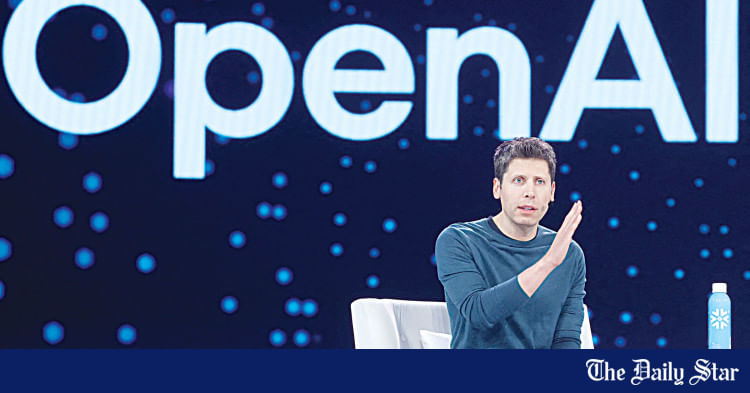OpenAI CEO Sam Altman speaks during Snowflake Summit 2025 at Moscone Center in San Francisco, California. OpenAI’s annualised revenue is on track to hit $20 billion by year-end, up from $5.5 billion last year. Photo: AFP/FILE
“>
OpenAI CEO Sam Altman speaks during Snowflake Summit 2025 at Moscone Center in San Francisco, California. OpenAI’s annualised revenue is on track to hit $20 billion by year-end, up from $5.5 billion last year. Photo: AFP/FILE
Investors throwing cash at artificial intelligence face a glaring risk: OpenAI. True, the ChatGPT maker’s breakneck growth offers plenty to get excited about, with annualised revenue on track to triple this year. But its potential sudden jump from a $300 billion valuation to $500 billion, as Reuters reported on Wednesday, implies immense faith in a still-immature business model. If that faith is tested, chatbot makers following in its wake will suffer.
The firm led by Sam Altman ignited the AI frenzy when it launched ChatGPT in 2022. It is now expected to hit 700 million weekly active users in August. Fewer than 10 percent actually pay for monthly subscription plans costing either $20 or $200, a person familiar with the matter told Breakingviews. The hope is that overall adoption grows so rapidly that this small slice covers the cost of responding to queries, which requires vast computational grunt. OpenAI also dominates enterprise adoption, capturing 34 percent of US businesses that pay for AI as of June, according to research firm Ramp. That outpaces rival Anthropic’s 10 percent, which is also seeking a new fundraising round at a $170 billion valuation, according to Bloomberg – nearly triple its last mark in March.
Both are notching incredible sales growth. OpenAI’s annualised revenue is on track to hit $20 billion by year-end, according to Reuters, up from $5.5 billion last year. Anthropic, buoyed by its model’s talent for coding, may hit $4 billion according to Bloomberg, up from $1 billion at the end of 2024, as reported by Reuters citing sources.
Whether this justifies the funding frenzy is another matter. Assume the best-case scenario: that these wildly cash-burning businesses achieve a 27 percent free cash flow margin by 2030, in line with Alphabet or Microsoft. Apply a 10 percent discount rate and 3 percent terminal growth, and OpenAI and Anthropic’s valuations imply revenue of over $225 billion and $75 billion in five years, respectively. AI chip darling Nvidia is projected to hit just $350 billion by then, according to Visible Alpha.
This is a young market, and use cases are vast, but cracks are starting to show. Early struggles and glitches mean 42 percent of companies have scrapped AI deployments this year, up from 17 percent in 2024, according to S&P Global.
That’s problematic because AI is all about scale. It’s incredibly expensive to both train models and to serve them through the cloud. OpenAI wants to build its own data centers to control costs, but those efforts take time. Meanwhile, moves like giving away free-to-use, “open” models could cannibalize users.
Investors seem to believe that OpenAI and its ilk can outgrow these problems. If Altman stumbles, despite all of his advantages, this load-bearing assumption will collapse. The order of the day is ever-expanding addressable markets, ever-more-grandiose claims about the power of the tech. Without either, the economics just do not work.
ChatGPT maker OpenAI is in early-stage discussions about an employee stock sale that could value the company at about $500 billion, Reuters reported on August 6, citing a source familiar with the matter. It comes after OpenAI announced a funding round at a valuation of $300 billion in March.
Anthropic is nearing a deal to raise as much as $5 billion in a new round of funding that would value the artificial intelligence startup at $170 billion, Bloomberg reported on July 29. Anthropic raised $3.5 billion at a $61.5 billion post-money valuation in March.




 For all latest news, follow The Daily Star’s Google News channel.
For all latest news, follow The Daily Star’s Google News channel.